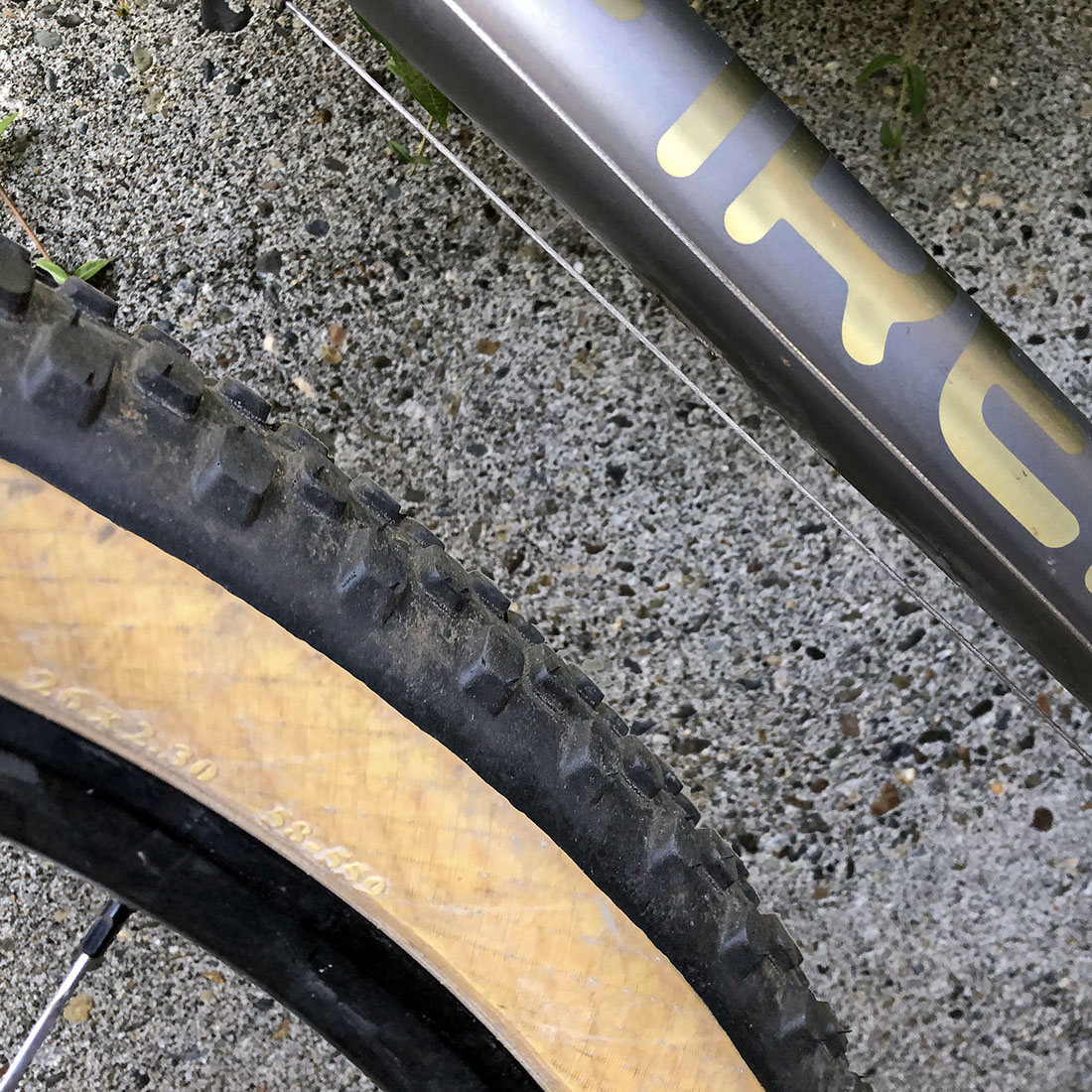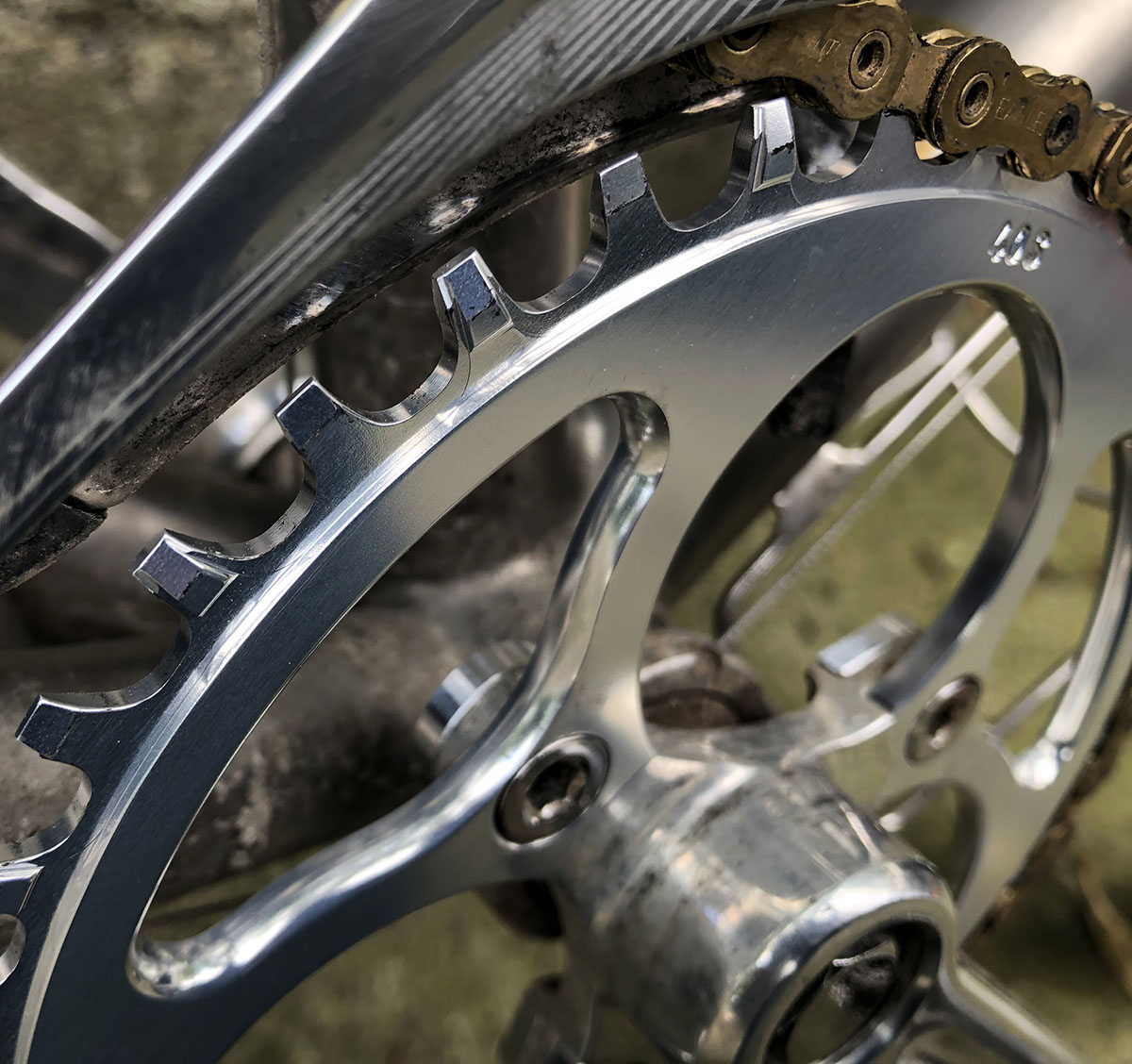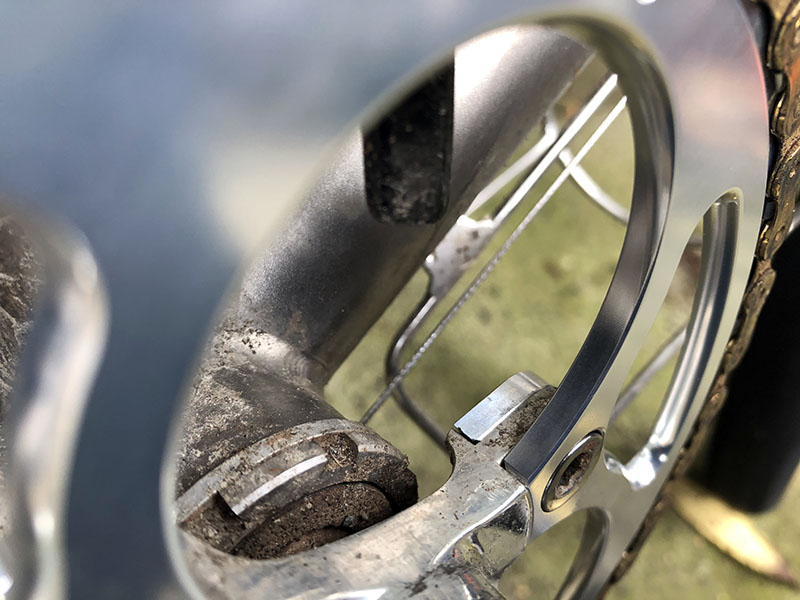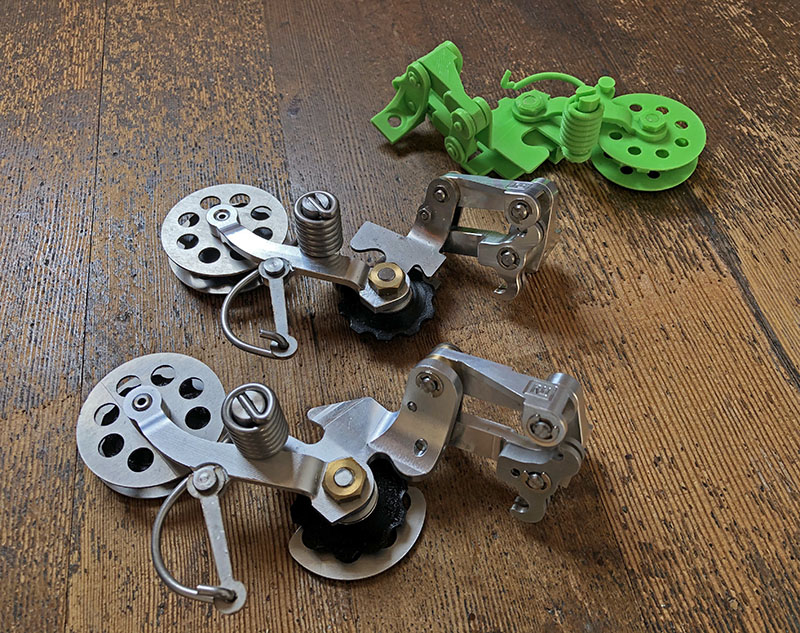Testing Prototypes

Product development is fun, because we get to think about bike parts, figure out how to improve them, and then test them on our adventures. This summer has seen plenty of excitement in that respect. Some of the parts we’ve been testing are almost ready to go into production; others are still some ways off.
It’s been an open secret that we are working on a knobby version of our 26″ Rat Trap Pass tires. While 26″ has almost vanished from the new bike market – outside a few custom builds like my Firefly – there are literally thousands of wonderful old mountain bikes. With a set of super-supple tires, they can become anything from a bikepacking rig to an ultra-fast all-road machine.
The new knobbies will add even more to the appeal of these bikes. Of course, we don’t make replicas of classic tires: The new tires will feature our proven dual-purpose tread and the next generation of our noise-cancellation technology. Like all our knobbies, the new tires combine the performance of a good racing slick with the grip of a knobby.

The Firefly has seen a lot of testing duty lately. Here’s a spy shot of a chainring marked ’40S.’ Being able to run a One-By with a Rene Herse crank will be a great option.

We like to keep our parts backward- and forward-compatible. With the One-By rings, we’ve also developed chainring spacers that take the place of the inner ring. That way, you can convert any existing Rene Herse crank to a One-By. Or you can run two chainrings on your One-By crank in the future.
We’ll also offer the One-By cranks with our dedicated single crankarms. That way, you’ll get a little less weight and a little more elegance.

Brake performance is only as good as the system’s weakest link. For many cantilever and centerpull brakes, the weak link is the cable hanger. I was reminded of that not long ago, when we tested an affordable randonneur bike with brakes that performed worse than expected. At first, I thought the setup – with too much toe-in – was to blame. After the Bicycle Quarterly with the test report went to print, I finally realized that the cable hanger – a stamped piece of flat steel – flexed so much that the entire brake felt mushy and lacked power. And yet stiff cable hangers are rare. That is why I drilled the stem on my Mule, to provide an anchor for the cable housing that doesn’t flex.
Clearly, a stronger cable hanger is needed. Using Finite Element Analysis, we optimized the shape of our prototype to minimize flex. My Mule with its flex-free setup is a great bike to test it: Riding the bike on the same course before and after installing the new cable hanger provides a good comparison. I’m happy to report that even under full braking from 40+ mph on an 18% downhill, brake performance is as good as with the flex-free setup.
We’ve also designed the hanger so it lines up with our brakes: One reason why Rene Herse’s bikes were so elegant is that the brake cables ran parallel to the head tube and seatstays. That way, they seem to disappear. It’s the same idea as a good fenderline that emphasizes the roundness of the wheel and makes the fender disappear.
Designing an ultra-stiff cable hanger was hard enough, but producing one is even harder. First we wanted to forge it, but the shape isn’t suitable for that. (You’d have to forge a flat piece first and then bend it, but bending aluminum weakens it.) CNC-machining is the only feasible option, but that means carving it out of a big block of aluminum. That is a bit wasteful in this case, where 90% of the material gets carved away (even though the aluminum chips get recycled), and expensive. We’ve decided it’s worth it, but we also understand why there are so few really great cable hangers out there…

Those are just a few of the new projects that are in the works. There’s also a certain rear derailleur that is now in the third prototype version. I rode the first prototype in last year’s Paris-Brest-Paris and loved it. The second version was designed to handle a wider spread of gears. The third version has further improvements and is (probably) the final model that will go into production.
We’re really excited about these parts, and we can’t wait to offer them to our customers, too. But until that happens, we want to test them more. All too often these days, customers are unwitting ‘beta testers,’ who get to try out new products before they’ve proven themselves. Here at Rene Herse Cycles, we only introduce new parts after they’ve been ridden many thousands of miles. That takes a little more time, but it means that if you see something in the Rene Herse program, you know that it works.


